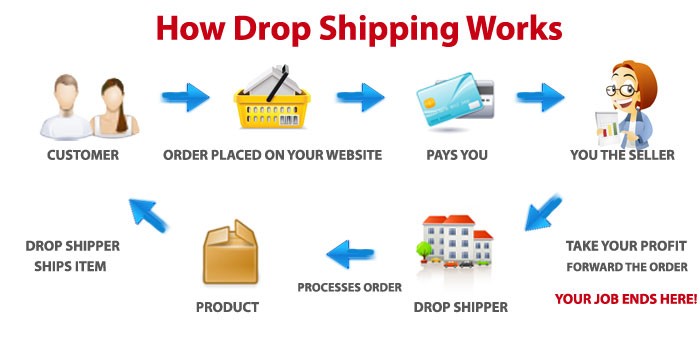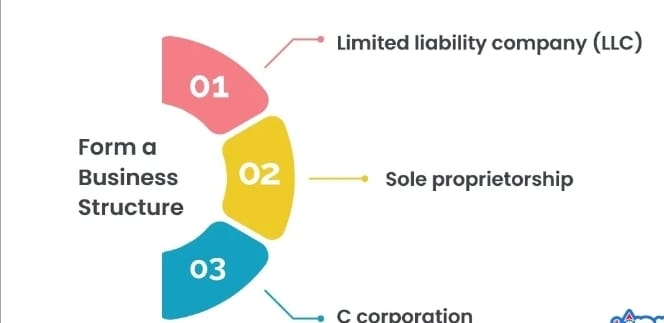
Table of Contents
Unlocking Success: A Beginner's Guide to Dropshipping
Are you dreaming of starting your own business but worried about hefty startup costs and inventory management? Enter dropshipping – the ultimate solution for aspiring entrepreneurs looking to dip their toes into the world of e-commerce without breaking the bank.
What is Dropshipping?
Let’s start with the basics. Dropshipping is like running a retail store without ever needing to handle inventory. Instead of stocking up on products, you partner with suppliers who handle the storage and shipping for you. When a customer places an order on your online store, the supplier ships the product directly to them. You, as the dropshipper, simply act as the middleman, making a profit on the price difference between what you sell the product for and what you pay the supplier..
Finding Your Niche
The key to dropshipping success lies in finding the right niche – a specific market segment with high demand and low competition. Think about what interests you and what products you’re passionate about. Whether it’s trendy gadgets, stylish home decor, or eco-friendly beauty products, there’s a niche for everyone.

Researching Suppliers
Once you’ve identified your niche, it’s time to find reliable suppliers who offer quality products and efficient shipping. Platforms like DSers and AliExpress are popular choices for sourcing products from a wide range of suppliers. Look for suppliers with good reviews, reasonable prices, and fast shipping times to ensure a positive customer experience.
Maximizing Profit Margins
While dropshipping offers low startup costs, it’s essential to maximize your profit margins wherever possible. Cultivate strong relationships with your suppliers and negotiate favorable terms to ensure competitive pricing. Offering unique and exclusive products can also help differentiate your store and attract loyal customers willing to pay a premium.
Building Your Online Store
With your niche chosen and suppliers lined up, it’s time to build your online store. Platforms like Shopify and WooCommerce make it easy to set up a professional-looking website with minimal technical expertise. Choose a clean and user-friendly design, add high-quality product images and descriptions, and optimize your site for search engines to attract organic traffic.
Marketing Your Business
No business can succeed without effective marketing. Start by researching your competitors and analyzing their strategies to identify what works and what doesn’t. Invest in paid advertising on platforms like Google Ads and Facebook Ads to reach your target audience. Don’t underestimate the power of email marketing and influencer partnerships to drive sales and build brand awareness.
Streamlining Your Operations
Managing a dropshipping business can be time-consuming, but there are tools and technologies available to streamline your operations. Route management software like Upper Route Planner can help optimize delivery routes, track shipments, and improve overall efficiency. By automating repetitive tasks, you can focus on growing your business and delighting your customers.
Conclusion
Dropshipping offers a low-risk entry point into the world of e-commerce, making it an attractive option for aspiring entrepreneurs. By finding the right niche, partnering with reliable suppliers, and implementing smart marketing strategies, you can build a successful dropshipping business from scratch. So what are you waiting for? Start your dropshipping journey today and unlock your path to entrepreneurial success..
FAQs: Getting Started with Dropshipping
1. What exactly is dropshipping? Dropshipping is a retail fulfillment method where a store doesn’t keep the products it sells in stock. Instead, when a store sells a product, it purchases the item from a third party and has it shipped directly to the customer. As a result, the merchant never sees or handles the product.
2. How do I find the right niche for my dropshipping business? Finding the right niche involves identifying a market segment with high demand and low competition. Consider your interests, passions, and market trends when selecting a niche. Conduct thorough market research to understand customer preferences and identify profitable opportunities.
3. How do I choose reliable suppliers for my dropshipping business?
When choosing suppliers, prioritize reliability, quality, and shipping times. Look for suppliers with positive reviews, clear communication, and competitive pricing. Platforms like DSers and AliExpress offer access to a wide range of suppliers and products, making it easier to find reliable partners.
4. What are some effective marketing strategies for dropshipping businesses? Effective marketing strategies for dropshipping businesses include paid advertising, email marketing, influencer partnerships, and search engine optimization (SEO). Experiment with different tactics to reach your target audience and drive sales. Focus on building brand awareness and engaging with your customers to foster loyalty.
5. How can I optimize my dropshipping operations for efficiency? Streamlining your dropshipping operations involves using tools and technologies to automate repetitive tasks and improve overall efficiency. Route management software like Upper Route Planner
can help optimize delivery routes, track shipments, and enhance customer satisfaction. Invest in systems that simplify order processing, inventory management, and customer service to scale your business effectively.
6. What are some common challenges faced by dropshipping businesses? While dropshipping offers many benefits, it also comes with its own set of challenges. Common issues include shipping delays, product quality issues, inventory management difficulties, and intense competition. However, with careful planning, strategic decision-making, and ongoing optimization, these challenges can be overcome.
7. Is dropshipping a profitable business model?
Dropshipping can be a profitable business model when executed effectively. Success depends on factors such as niche selection, supplier relationships, marketing strategies, and operational efficiency. While dropshipping offers low startup costs and minimal risk, it requires dedication, persistence, and continuous adaptation to succeed in the competitive e-commerce landscape.
.





